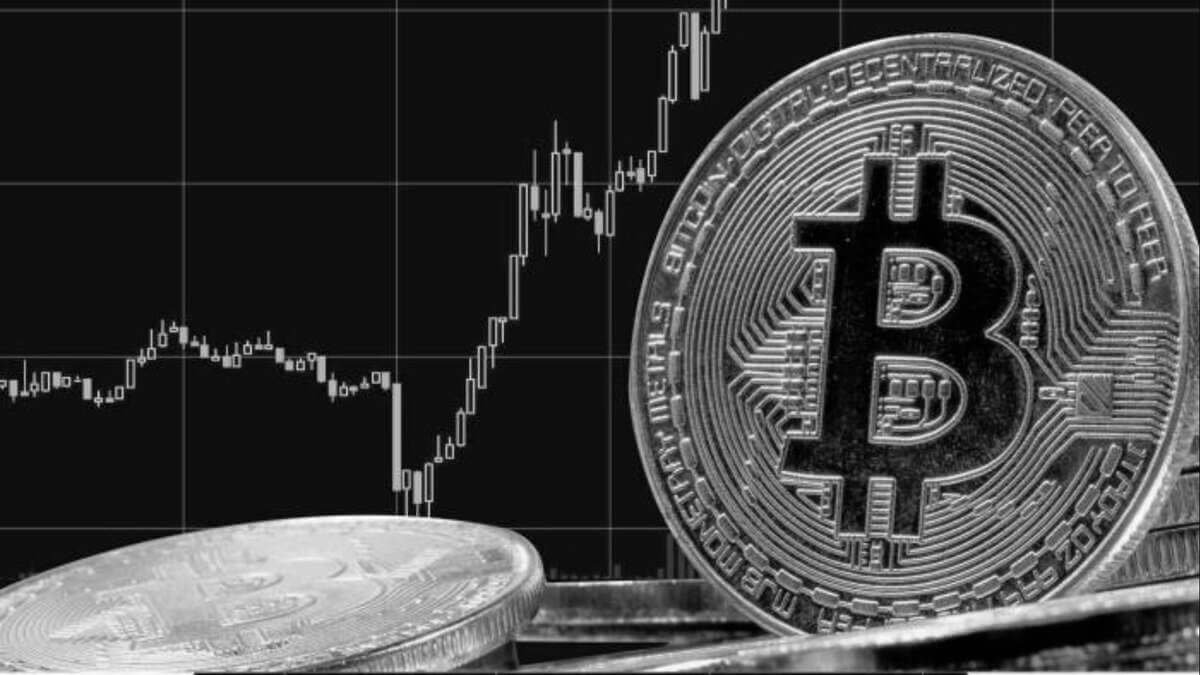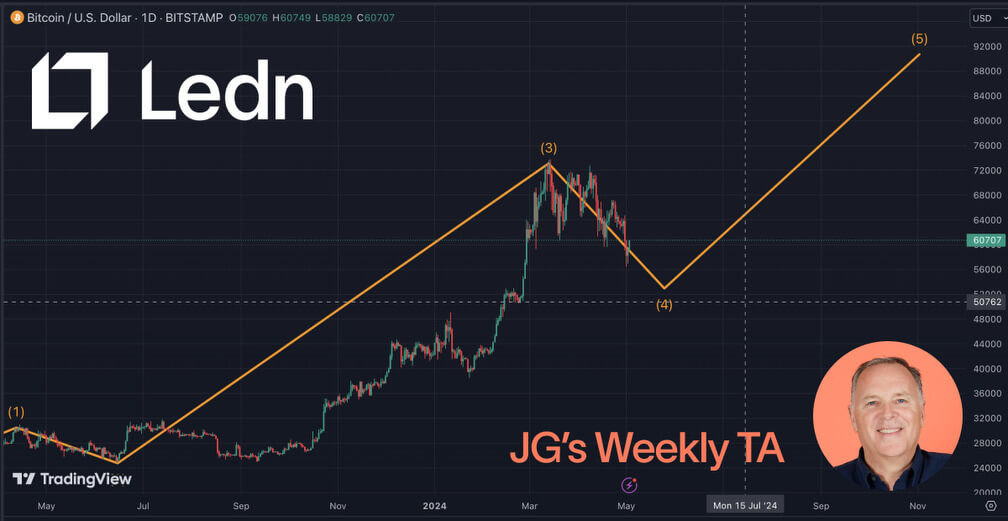Bitcoin is facing macro headwinds. Ledn CIO sees BTC at $92,000 by the end of 2024.

Leading cryptocurrency Bitcoin experienced a notable decline from its all-time highs as investors failed to witness the expected “halving bump” in the market, with other major cryptocurrencies also falling. The latest setback comes amid mixed economic data and wavering optimism about the approval of an Ethereum spot exchange-traded fund (ETF) in the United States.
The surge in investor interest in cryptocurrencies sparked by the introduction of the first spot Bitcoin ETF in January has waned in recent weeks. Despite the initial excitement surrounding the imminent launch of the Ethereum spot ETF, waning confidence has created a gloomy sentiment pervading the cryptocurrency market.
The possibility of a U.S. economic recession, characterized by persistent inflationary pressures and a significant slowdown in GDP growth in the first quarter, is adding to investor anxiety. These macroeconomic concerns have cast a shadow over the outlook for cryptocurrencies, which have often been viewed as alternative assets in times of economic uncertainty.
April witnessed volatile cryptocurrency markets with Bitcoin falling significantly from its new ATH in March.
Bitcoin’s price performance over the past month highlights the volatility of the market, showing a general downward trajectory with sporadic signs of recovery. In April, the price of Bitcoin fell more than 8%, ending the month at $60,318. This is a significant setback from the record high of nearly $74,000 recorded in March. Likewise, the price of Ethereum, which surged to $4,092 in March, ended April just below $3,000, reflecting investors’ continued hopes for the approval of an Ethereum spot ETF.
Despite the recent economic downturn, both Bitcoin and Ethereum have recorded significant gains, up approximately 50% and 40% respectively compared to the previous year. However, the performance of cryptocurrency investment vehicles such as the Grayscale Bitcoin Trust ETF (GBTC) has been less solid, with GBTC falling 11% in April due to concerns about operating costs rather than fundamental issues within the cryptocurrency. market.
Bitcoin Halving Is Now Over
The completion of the latest Bitcoin Halving event held on April 19th further highlighted the evolving dynamics within the cryptocurrency space. Each halving reduces the supply of new Bitcoin, historically triggering price increases. However, the recent halving, the fourth since Bitcoin’s creation, saw rewards to miners halved from 6.25 BTC to 3.125 BTC, highlighting the continued maturation of the Bitcoin ecosystem.
At the same time, the launch of Bitcoin Runes, a protocol for creating and trading meme coins on the Bitcoin blockchain, coincided with the halving event. Developed by Casey Rodarmor, Bitcoin Runes offers a new approach to cryptocurrency trading, although there are some initial issues with liquidity and price volatility.
The US SEC is expected to reject an Ethereum spot ETF.
Amid regulatory uncertainty, attention is now turning to the U.S. Securities and Exchange Commission’s (SEC) pending decision regarding an Ethereum spot ETF. Despite the optimism surrounding the approval of an Ethereum futures ETF in 2023, recent indications suggest that the SEC may adopt a cautious stance, delaying the approval of a spot Ethereum ETF.
As key deadlines for ETF applications, including those for VanEck and ARK Investment Management, approach in May, investors are bracing for potential difficulties amid reports of discouraging interactions with the SEC. Regulators’ inclination to observe the performance of existing cryptocurrency investment products before approving a spot Ethereum ETF highlights the evolving regulatory landscape shaping the future of digital asset investing.
Cryptocurrency markets face a number of challenges, from regulatory hurdles to macroeconomic uncertainty, dampening investor sentiment and increasing volatility. The trajectory of cryptocurrencies in the coming months remains uncertain as stakeholders await clarity on the regulatory front, highlighting the need for regulatory clarity and market stability.
Expert analysis and future predictions
As global financial markets suffer from a lack of liquidity, predictions about Bitcoin’s future are becoming increasingly polarized. John GloverLedn’s chief investment officer remained bullish on the cryptocurrency’s prospects, predicting it could rise to $92,000 by November 2024 following a “five wave” of Bitcoin price movements.

Glover’s optimism contrasts with broader economic indicators that suggest a challenging environment for cryptocurrencies in the near term. “BTC price action continues to track my expected path for wave 4,” Glover said, noting the recent decline to $56.5K and believes the correction phase may be complete. “Prices may still be in the $52-55,000 range before the fourth wave is completed by June 2024, but we are confident of a strong rise to around $92,000 thereafter,” Glover added.
Meanwhile, Ryan Lee, senior analyst at Bitget Research, offered a more cautious outlook. According to Lee, the tightening of global financial liquidity, influenced by the surprising rise in the US consumer price index and the disappointing first quarter GDP report, could suppress cryptocurrency prices in the near term.
“We expect Bitcoin to fluctuate between $56,000 and $68,000 in May, while Ethereum could see larger fluctuations between $2,600 and $3,600 due to the upcoming ETF,” Lee said. explained:
Bitcoin price rose slightly by 0.04% over the past 24 hours. At the time of this writing, Bitcoin was trading at around $63,950.61, according to CoinMarketCap.
The contrasting forecasts highlight the uncertain environment facing Bitcoin and other cryptocurrencies amid macroeconomic pressures. Glover’s longer-term outlook suggests a significant rebound, but Lee’s analysis highlights potential volatility and downward pressure in the coming months, reflecting broader concerns about weakening U.S. interest rates, real estate demand and consumer spending.
Moreover, with the US dollar index remaining strong near 106 and the Fed’s net liquidity tightening, financial conditions suggest a cautious approach for investors. Cryptocurrency markets, known for their volatility, can see significant fluctuations as they navigate a difficult macroeconomic environment.
Also Read: Bitcoin ETF Marks the Beginning of Bitcoin’s Second Era



